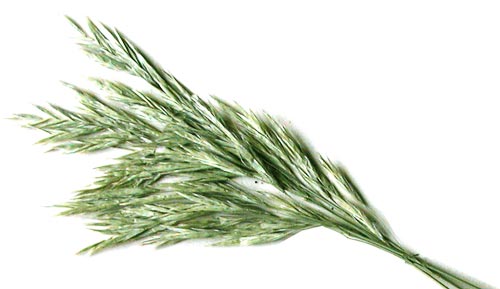Relatives
Bromopsis divaricata Holub. - Divaricate brome.
Taxonomic position.
Family Poaceae Barnhart., genus Bromopsis Fourr.Synonyms.
Bromopsis riparia subsp. divaricata Tzvel., Zerna riparia subsp. divaricata Tzvel.Biology and morphology.
Perennial plant, robust, with long rhizomes. Root system is well-developed. Stems erect, up to 70 cm tall, covered with retiform fibers. Panicle 10-15 cm long, well-branched, with diffuse branches. Spikelets 1.5-3.5 cm long, with the 5-7 flowers. Glumes are not equal in length; upper glume is 0.9-1.2 cm long; lower glume is 0.8-1.0 cm. Blossoms in June; seeds ripen in July. Cross-pollinated by wind. 2n = 14, 37, 39, 42, 49, 56, 64, 70, 78.Distribution.
Endemic to the Caucasus (Abkhazia).Ecology.
Occurs on dry, loamy slopes, among bushes and in arid woods up to the lower mountain zone.Utilization and economic value.
Forage and pasture species. Can be used for hay, haylage. Good palatability. Improves soil structure and fertilization. Used for erosion controlLiterature cited:
Brezhnev D.D., Korovina O.N. 1980. Wild relatives of the cultivated plants of flora of the USSR. L.: Kolos, 376 pp. (in Russian).Fedorov A.A., ed. 1974. Flora of the European part of the USSR. Vol. 1. L.: Nauka, 404 pp. (in Russian).
Rozhevitz P.U., Shishkin V.K., eds. 1937. Flora of the USSR. Vol. 2. M.-L.: USSR, 778 pp. (in Russian).
Tzvelev N.N. 1976. Poaceae USSR. L.: Nauka, 788 pp. (in Russian).


